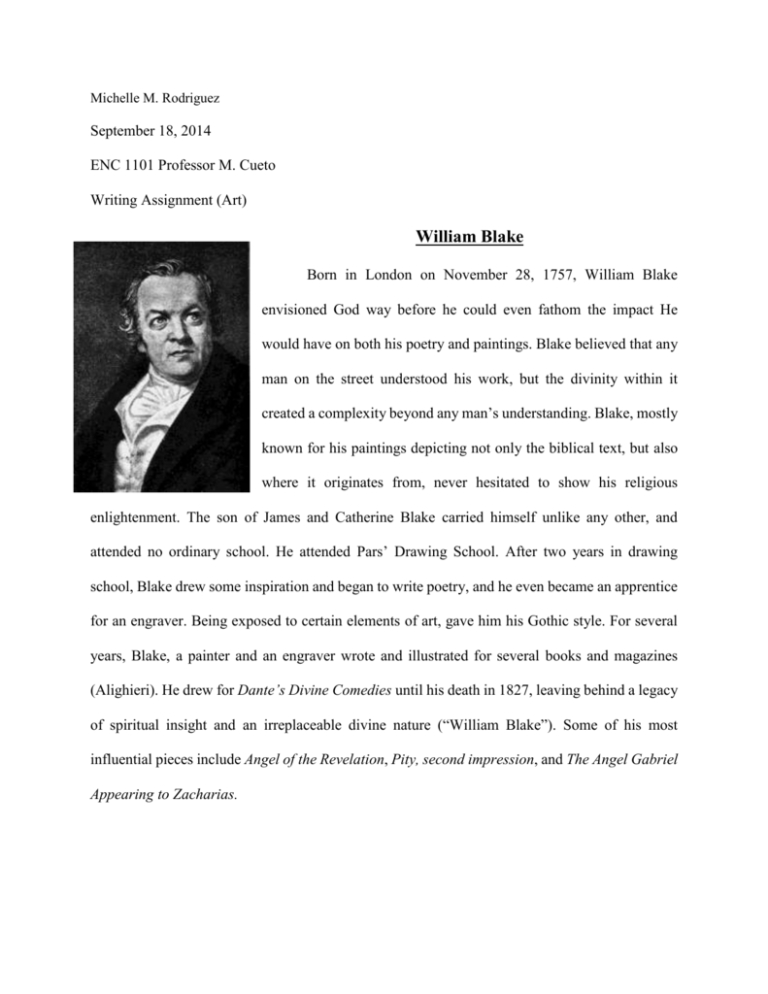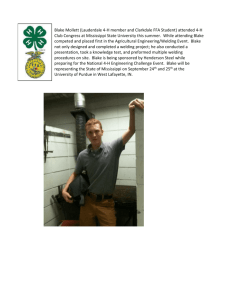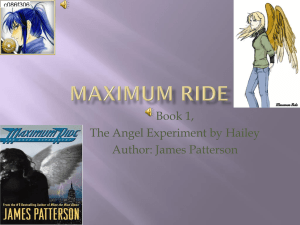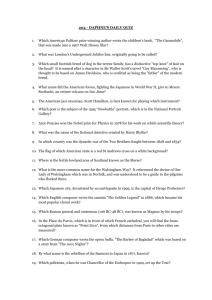wiliam blake
advertisement

Michelle M. Rodriguez September 18, 2014 ENC 1101 Professor M. Cueto Writing Assignment (Art) William Blake Born in London on November 28, 1757, William Blake envisioned God way before he could even fathom the impact He would have on both his poetry and paintings. Blake believed that any man on the street understood his work, but the divinity within it created a complexity beyond any man’s understanding. Blake, mostly known for his paintings depicting not only the biblical text, but also where it originates from, never hesitated to show his religious enlightenment. The son of James and Catherine Blake carried himself unlike any other, and attended no ordinary school. He attended Pars’ Drawing School. After two years in drawing school, Blake drew some inspiration and began to write poetry, and he even became an apprentice for an engraver. Being exposed to certain elements of art, gave him his Gothic style. For several years, Blake, a painter and an engraver wrote and illustrated for several books and magazines (Alighieri). He drew for Dante’s Divine Comedies until his death in 1827, leaving behind a legacy of spiritual insight and an irreplaceable divine nature (“William Blake”). Some of his most influential pieces include Angel of the Revelation, Pity, second impression, and The Angel Gabriel Appearing to Zacharias. The Angel of the Revelation depicts the biblical passage from the book of Revelations perfectly. Surrounded by orange and red flames, the angel’s legs portray pillars of fire. The array of white light and colors above the angel represent the voices of the seven thunders or seven angels with trumpets that resonate throughout the Earth. The small figure of Saint John, Jesus’ Apostle, under the towering angel symbolizes just how small human sacrifices compare to the sacrifices that those in the heavens make for mankind throughout the bible. The angel covers the entire canvas and takes full control and dominance over the painting. By outstretching his hand, the angel summons the heavens to find the light, much needed everywhere else in the painting. The ominous scene of men riding on horses with cavalry suits on, found within the angels drapes of smoke make up Saint John’s vision. In this scene, the men have a purpose to search and destroy followers of Christ. It depicts an uncontainable animosity which Saint John cannot remove from his visions. The scroll which the angel holds in his left hand holds Saint John’s future and purpose within it (Revelations 10:1-7). Inspired by one of Shakespeare’s most famous plays, Macbeth, William Blake painted Pity, second impression. The painting shows a literal representation of a simile within the play which starts in Scene 1, Line 7: And pity, like a naked newborn babe. The stretching of the woman on the galloping horse towards the young lady, who lies on the ground like a baffled child, shows pity as does the expression of concern on the woman’s face. The woman on the horse exerts a beatific nature as she carries a newborn baby. A newborn baby receives the most pity if hurt, sick or dying and so the baby represents the extent of pity the rider conveys for the young lady. The young lady lies on the ground helplessly awaiting her possible death as the rider swoops by. She lies on her back staring blankly up into the sky with her head rested on a cushion of blonde curls. She seems almost complacent to the death that awaits her. The blue and grey background sets an eerie mood for the painting which contradicts the white paintings of the angelic looking woman and horse whose mane glides through the wind with her blonde locks. The shadow behind the rider and the horse depicts them gliding off and not even paying any attention to the young lady with the rider turned away from the scene. The entire painting portrays a living paradox (“Heilbrunn Timeline of Art History”). Like most of Blake’s paintings the Angel Gabriel Appearing to Zacharias also portrays a biblical passage from the gospel of Luke. The priesthood requires Zachariah to enter the temple and offer incense to God. The incense derives from a chain link which Zachariah holds, letting out an enormous amount of smoke accumulated on a pillar next to him. Zachariah’s clothing, ornamented with colors like blue and orange and topped off with a traditional hat, represent his priesthood. The candleholder to Zachariah’s right almost looks like a Menorah, a huge symbol of the Jewish religion. The light coming from the top of the painting shows that something divine and angelic occurs and sheds a light upon the dark temple. The angel with sacred wings lifts his hand to announce to Zachariah that his wife, Elizabeth, will bear him a son. Zachariah’s face holds a look of confusion and awe at what the angel proclaims to him. The white color of the angel embodies practically all the pureness within the painting because it contains mostly dark colors. To the left of the angel a table holds various containers that possibly contain incense, a vital substance in the Jewish religion (Luke 1:3-15). William Blake, a world renowned artist and poet, expressed his beliefs and interests through his religiously affiliated paintings and literal connection to plays like Shakespeare’s Macbeth. He altered the conventional way of looking at certain passages with his artistic abilities. Blake greatly impacted the Christian community and lovers of literature with just a pen and black ink. Blake was not any ordinary person and although his pieces were at times tough to understand, the legacy of religious enlightenment and literature left behind incredibly left a mark on mankind. Works Cited Alighieri, Dante. Dante's Divine Comedy. London, 1851. Print. "Heilbrunn Timeline of Art History." William Blake: Pity (58.603). The Metropolitan Museum of Art. Web. 18 Sept. 2014. “Luke 1:3-15.” The Catholic Youth Bible. NRSV Catholic Edition ed. Winona, Minnesota: Saint Mary’s. 1488. Print “Revelations 10:1-7.” The Catholic Youth Bible. NRSV Catholic Edition ed. Winona, Minnesota: Saint Mary’s. 1488. Print. "William Blake." Poets.org. Academy of American Poets. Web. 14 Sept. 2014.







